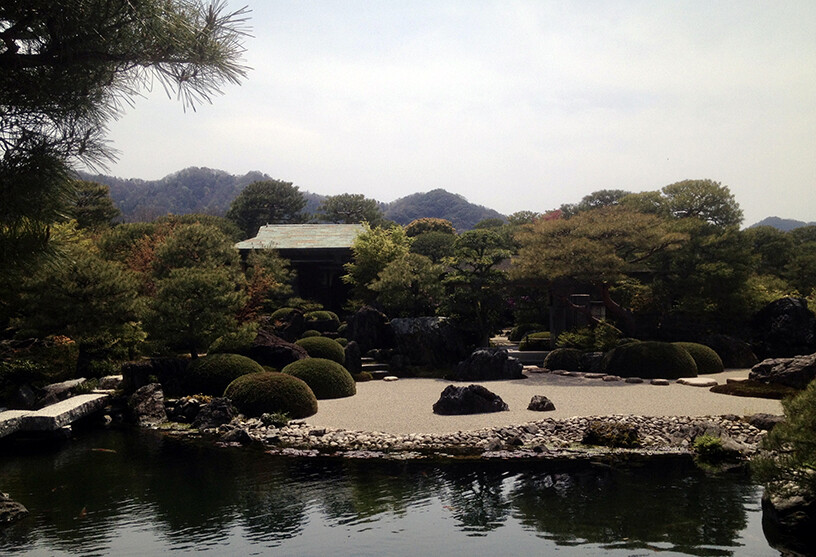-
Posts
2,903 -
Joined
-
Last visited
-
Days Won
3
Content Type
Profiles
Forums
Events
Store
Downloads
Gallery
Everything posted by Soshin
-
Very nice tsuba thanks for sharing!
-

NCJSC 2025 To-ken Taikai
Soshin replied to Toryu2020's topic in Sword Shows, Events, Community News and Legislation Issues
I cannot make it this year due to unemployment. Once I get that next job, I hope to go to this show next year and say hello to some of my old friends. -

Repair/restoration for an important Momoyama Period Owari tsuba?
Soshin replied to Iaido dude's topic in Tosogu
Here is my one hundred yen on this topic. I completely agree with @Ray Singer on this. The tsbua is nice and it reminds me of an early Edo Period Owari tsuba I once had with hakogaki by Sasano with a similar sukashi design that later traded away to the tsuba expert of Baltimore. The tsuba is fine and should be left as is. The NBTHK papers are not irrelevant, but that comment is more than a bit off topic and therefore not worth discussing in my opinion and hints at other members' ulterior motives. -
I stand corrected. Thank you for the clarification. Regress I am still incredibly happy with the tsuba you made me. I still use it on my training sword, and it does a wonderful job.
-
He replied to me when he had his annual Easter sale last month. I Contacted him via his personal website: Markus Sesko | Japanese Arms and Armor. I picked up a nice low-priced eBook about Akasaka tsuba. I really need to get to reading this eBook once I add a nice Akasaka tsuba to my collection.
-
I currently only have one tsuba made Manuel Coden @C0D a student of the late Ford Hallam. When I had my Japanese art business, I sold one tsuba made by Kevin Adams another student of Ford Hallam.
-
Hi @Markus, Thank you for your work, information, and the blog post. I found it interesting to download the NBTHK-Kantei Alphabetical PDF and look up different swordsmiths I have been able to examine work examples in my study over the years.
-

Mumei Kanayama tsuba that point to a specific tsubako
Soshin replied to Iaido dude's topic in Tosogu
@GRC I have since cooled down from my above posts and need to address a severe problem in my life that cannot be ignored. I hope to get the problem resolved sooner than later and I can get back get back to this hobby. PS. @Curran Love the great tsuba(s) you are sharing and providing positive posts to this topic. -

Mumei Kanayama tsuba that point to a specific tsubako
Soshin replied to Iaido dude's topic in Tosogu
@GRC nothing you have written proves anything, your classification system is just a subjective and arbitrary system as the current system used by the NBTHK. Why would I be interested in removing some subjective system that is linguistically and culturally appropriate and substituting your system that is equally subjective but lacks any linguist and cultural understanding or context? Let's agree to disagree and leave it at that. -

Mumei Kanayama tsuba that point to a specific tsubako
Soshin replied to Iaido dude's topic in Tosogu
Here is my explanation for my down vote for me, which I don't use often on this website. Tsuba is functional fine art, and I enjoy them as such. In my opinion reclassification of the current system of groups and later organized schools while not perfect is not at all necessary and takes away time for the direct study, appreciation, and enjoyment of the tsuba themselves as a form of fully functional pocket-sized fine art. Some of my favorite tsuba could only be attributed to a province or domain (e.g. Higo, Saga) nothing more. I recently picked up my first large Ko-Tosho tsuba (big pockets only) for my collection. I cannot wait until I get to take nice photographs of it. It was in the previous owners' collection for 20+ years. -

Ohno Christian/Buddhist Tsuba (for whopping $112 on Jauce)
Soshin replied to Iaido dude's topic in Tosogu
This is clearly fake, the reverse side confirms this as the sekigane are not real and functional on the tsuba and part of the cast reproduction. I am happy you didn't spend much money on Jauce. Yahoo!Japan is as bad as eBay now. I avoid both websites. It is a paper weight or a reference example at best of what to avoid and I would not recommend mounting it on any sword or whatever. On my martial arts training sword, I needed to replace a similarly made tsuba that was a cast reproduction with a functional tsuba. -
Thank you @Tim Evans. My teacher Dr. David A. Hall learned at the Yagyu-kai in Tokyo in the 1980s under Yagyu Nobuharu the 21st headmaster of the Yagyu Shinkage Ryu. My teacher remembers training with Koichi who later became the 22nd headmaster of the Yagyu Shinkage Ryu and who was adopted into the Yagyu family and formally assumed the leadership of the ryu after Nobuharu passed away in 2007. My goal training in traditional Japanese martial arts is to become the best evil ronin in a jidaigeki film history and have the most spectacular onscreen death seen ever in Japanese cinema.
-
The funning thing is I read it as "provenance" and not "providence" on your original post. Regardless it is a completely valid point made by @Curran about establishing the provenance of such a Yagyu tsuba apparently being part of such a high-profile exhibit by the NBTHK. I raised this same concern with @Okan when he contacted me about this Yagyu tsuba via private message. Here is a NBTHK Hozon tsuba with a triangle and circle design that was the basis of Manuel Coden's (a.k.a. @C0D) utsushi-mono. I know because I commissioned Manuel Coden to make the tsuba for me in 2020. I use it for my training in Yagyu Seigo Ryu Batto. Legitimate utsushi made by modern sword fittings artists are more common than many people think with Yagyu tsuba with classic designs in my opinion.
-
Yes, I have all three books of the Tosogu Classroom series translated by Markus Sesko from the writings done by Fukushi Shigeo for the NBTHK. They are a great read with a lot of helpful information to improve your study, appreciation, and collecting of Japanese sword fittings.
-
I completely agree with this statement. It best to save up and buy at the various Japanese antique art shows (including Chicago show) or in my specific case when I visit Japan. Starting next I will be visiting Japan increasingly often not just like the casual vacation when I was young and single. P.S. I have just marked the dates for the 2026 Chicago show on my calendar. Thank you @Mark S. for posting an information card for next year's show.
-
I came across this short video on YouTube discussing the basic identification of Satsuma-yaki. I enjoyed watching it and wanted to share it here, enjoy.
-

Another Passing to Report
Soshin replied to Grey Doffin's topic in Sword Shows, Events, Community News and Legislation Issues
Sorry to hear about the loss of Skip Holbrook. I had his contact information in my iPhone and his business card. I remember getting a wonderful trade from him for heavily damaged tsuba I had one year at the old Tampa show. I remember the trade vividly as he was willing to trade three of this nice condition tsuba for my one heavily damaged tsuba that he wanted to work on and try to improve its condition. That tsuba was later restored completely by him and it was papered Tokubetsu Hozon by the NBTHK at shinsa. I remember talking to him mostly at shows, he was very knowledgeable. He had his master's degree in art where he studied the patination process applied to iron by my premodern Japanese sword fitting artists. It is a sad day. -
Thank you for posting this PDF, Dale @Spartancrest. Enjoyed the quick read of the article written by Malcolm Cox and downloaded and saved it as a reference. The article had several examples and a few from my collection or was once in my collection.
-
I cannot attend the Chicago show this year unfortunately. @Mark Mark Jones and family has put on some wonderful Chicago show that I was fortunate enough to be a part of in the past. Please post as many photos as possible of the show here on NMB. I would love to see the tables and displays. Thank you in advance for taking the time to do it while NMB members are walking around the show floor.
-
@Toryu2020 Tom, thank you for sharing these great photos of the wonderful displays done by your local Token Kai. This year's Washington, DC cherry blossom festival and my annual demo of traditional Japanese martial arts on Penn. Ave. went very well. My wife took a few photos while my school was demonstrating. I am looking through the photos now.
-
Looks great to me on my Windows 11 desktop computer using the Edge web browser. I never access NMB on my iPhone 8+. I tried your website using my iPhone 8+ by typing the address into my Safari web browser on my iPhone 8+ and it looks great to me as well. @Scogg Sam, do you want me to try and fill out the contact form? Please let me know.
-
I was in a bit of a hurry last Friday and didn't have time to resize some better images in Photoshop for upload to NMB. All these things take time, and I was busy doing three or four things at one time on Friday evening. Here are some better photos that I hope you like and find helpful for your study. The iron of the separate applied rim and plate of this tsuba itself feels genuinely nice in hand. Something that cannot be captured in photos very well. The plate (ji 地) of the tsuba has a fine hammered texture (tsuchime-ji 槌目地) and retains some of the original black lacquer (kurourushi 黒漆) that was applied to the surface after the tsuba was made. The first photos of the raised rim nicely and the surface of the tsuba nicely. The second photos show the tsuba in a custom box with a nice but unsigned hakogaki.







